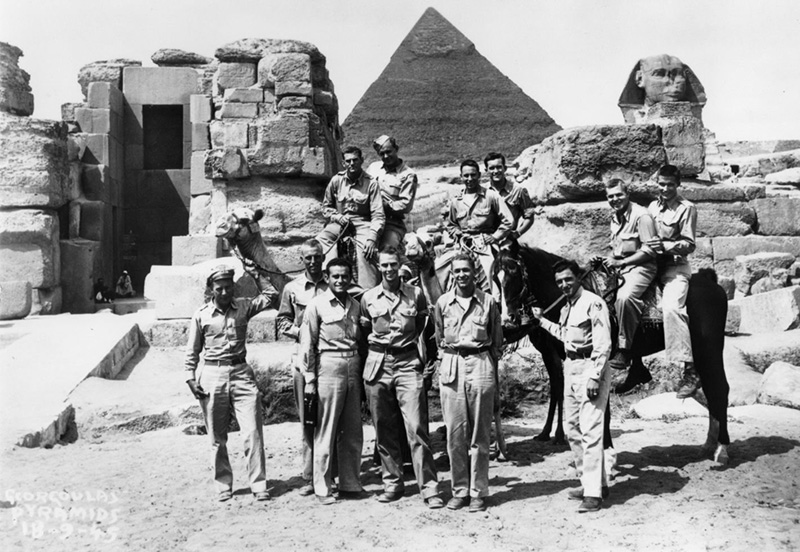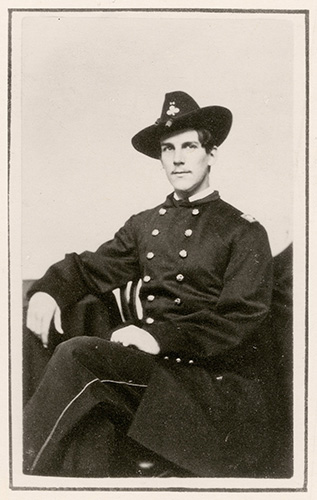
The national commemoration of the Bicentennial of the United States Constitution in 1989 included a booklet titled The Judiciary and Military Justice. It was part of a larger series, Soldier-Statesmen of the Constitution, a Bicentennial Series. The booklet outlined the names and dates of service of the Justices who had served in the Armed Forces to that date. In 2016, the staff of the Curator of the Supreme Court of the United States compiled an updated list of military service by Supreme Court Justices. Their list noted the service of forty Justices who are veterans of the Armed Forces. Two members of the current Supreme Court of the United States are veterans: Associate Justices Stephen G. Breyer and Samuel A. Alito, Jr. In addition, recently-retired Associate Justice Anthony M. Kennedy also served in the Armed Forces.
Many of the early members of the Court had military service, commencing with the first Chief Justice, John Jay, who served as a Colonel in the New York Militia during the Revolutionary War. Jay was the first, but not the last, person with military service to be appointed to the office of Chief Justice. To date, six of the 17 Chief Justices had military service. John Marshall, “The Great Chief Justice,” served in the Culpeper Minutemen and later as a Captain in the Continental Army. Marshall served closely with President George Washington who had a great impact on Marshall’s later life. Chief Justice Edward D. White served as a private in the Confederate armies during the Civil War. His appointment as Chief Justice is perhaps one of the greatest examples of reconciliation in the history of the country following that conflict. In addition to White, two Associate Justices of the Supreme Court also served in the C.S.A. during the Civil War: Lucius Q. C. Lamar and Horace Lurton. Two future Chief Justices served in World War I: Fred M. Vinson, who served as a Private, and Earl Warren, who achieved the rank of First Lieutenant. William H. Rehnquist served in World War II as a Sergeant in the newly minted U.S. Army Air Forces.
Twenty-one Supreme Court Justices serving during the 20th century served in the Armed Forces. During World War I, Hugo L. Black, Stanley F. Reed, Felix Frankfurter, William O. Douglas, Frank Murphy, Harold H. Burton, Tom C. Clark, Sherman Minton, Fred M. Vinson, and Earl Warren served for a period of time. All but Tom C. Clark served in the United States Army. Justice Clark served a year in the Texas National Guard. Their ranks included Private, Sergeant, First Lieutenant, Captain, and Major. Frank Murphy is the only one of that group who saw subsequent service in World War II. He achieved the rank of First Lieutenant in the U.S. Army in World War I and later served as a Lieutenant Colonel in the U.S. Army in World War II. While Army service unites many of the past Justices, only three served in the U.S. Navy, and all were 20th century appointees: Associate Justices Potter Stewart, Byron R. White, and John Paul Stevens. The U.S. Army Air Forces can claim three members of the Court with past service in that branch. In addition to Chief Justice William H. Rehnquist, John Marshall Harlan II and Lewis F. Powell, Jr. also served in the Army Air Forces. To date, the Marine Corps has no alumni who have served on the Court.

Perhaps the Supreme Court Justice best known for his past military service was Oliver Wendell Holmes, Jr. Twenty-year old Holmes answered President Lincoln’s call for 75,000 troops from state militias, and joined the 20th Massachusetts Volunteer Infantry. This unit was nicknamed the Harvard Regiment as so many of its officers came from that college. Holmes participated in some bloody battles. In the Battle of Ball’s Bluff, Holmes and his colleagues had to climb a heavily wooded bank 150 feet high. There they were positioned in an area one of his friends described as “one of the most complete slaughter pens ever devised.” Hundreds perished in the fighting, or trying to escape, and many of the wounded suffered horrific injuries. Holmes was shot in the chest, and almost unconscious, was put into a boat to be ferried across the river. He was transferred from the field hospital to the home of a friend in Philadelphia until his father came to take him back to Boston to recover. Later in the war, Holmes fought at Antietam. There, his regiment suffered heavy losses and Holmes was shot in the neck in that battle. In future years, Holmes would speak of his service. His most famous oration was made on Memorial Day in Keene, New Hampshire. He described his experience in the War and referenced “the armies of the dead” who had died for the Union. He noted that the “generation that carried on the war has been set apart by its experience. . . Through our great good fortune, in our youth our hearts were touched with fire. It was given to us to learn at the outset that life is a profound and passionate thing.” That he was greatly affected by that experience was evidenced not only in his oratory and writing, but also by the fact that he displayed the saber he had carried during the war over the mantle in his study.
Military service provides a special perspective on the intersecting powers of the federal government. The Constitution outlines a system designed with a series of checks and balances to protect against undue control by any one sector, underscoring the principle that we are a nation of laws. Justices who have served in the armed forces prior to serving on the Court have additional practical experience in how those powers function.




